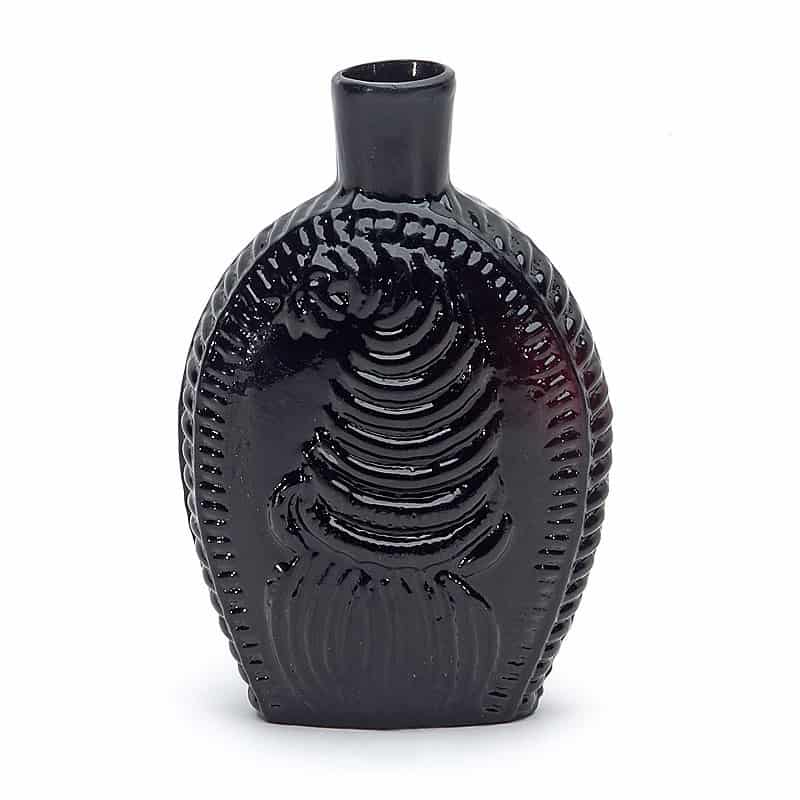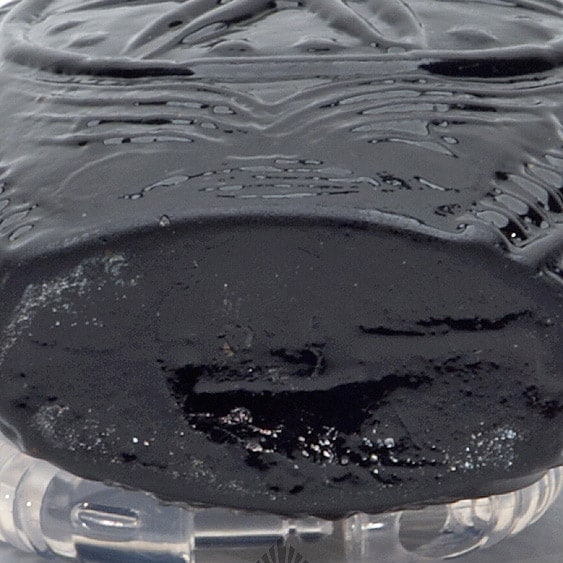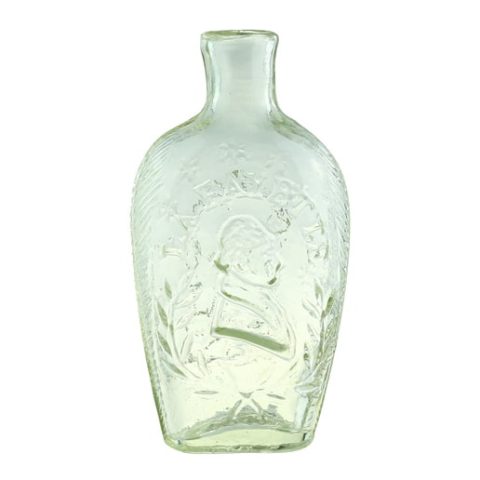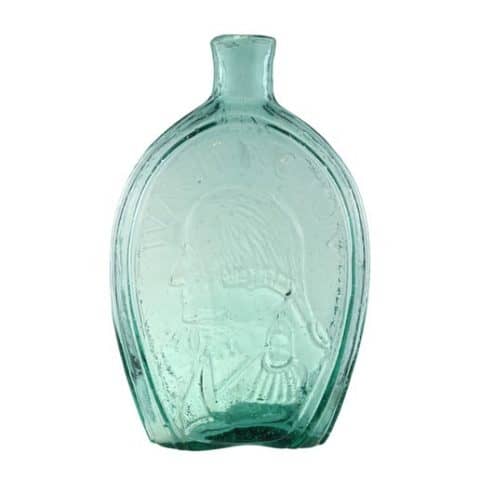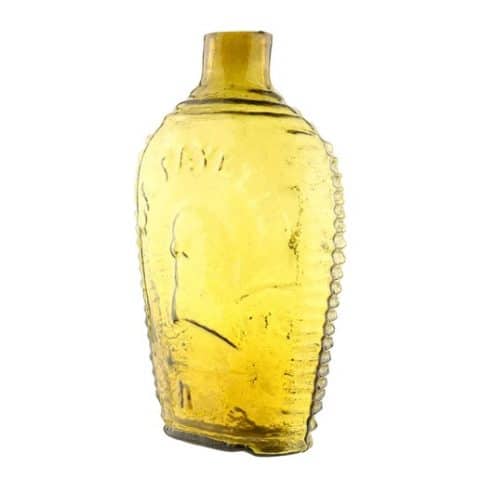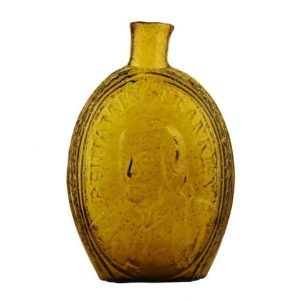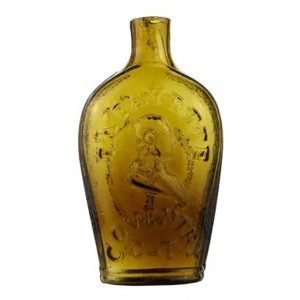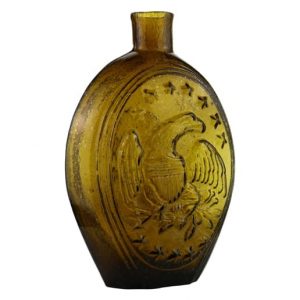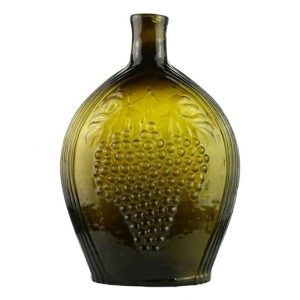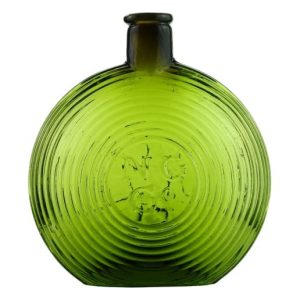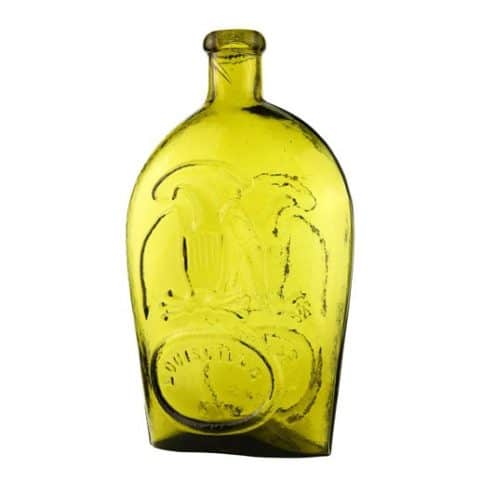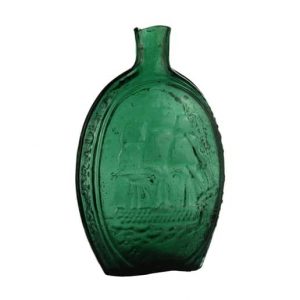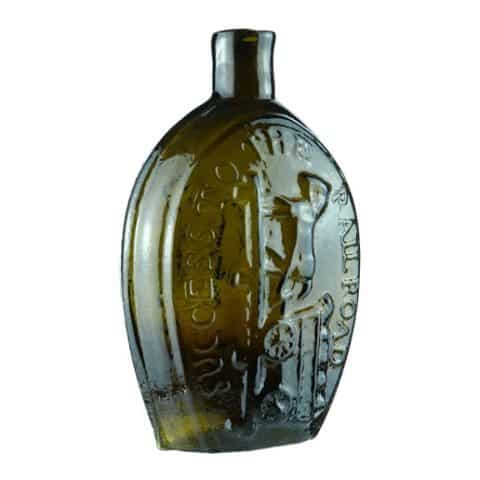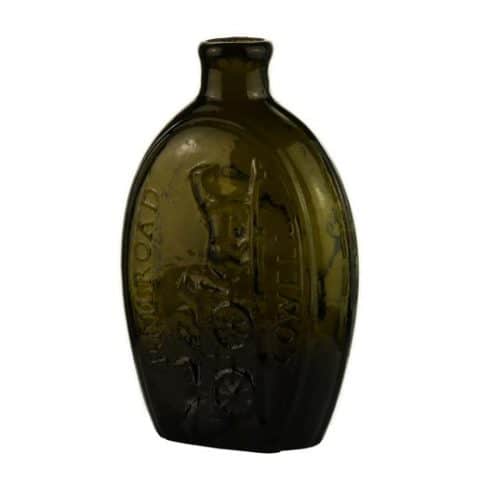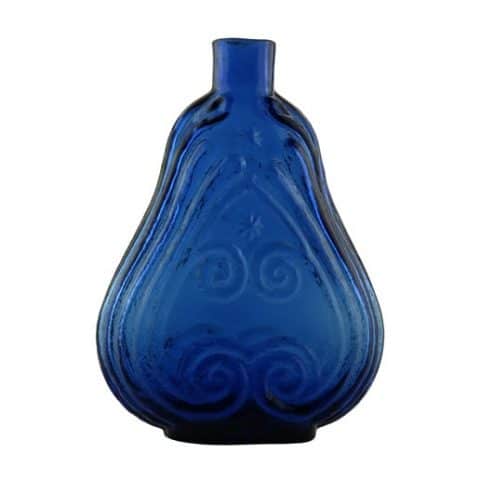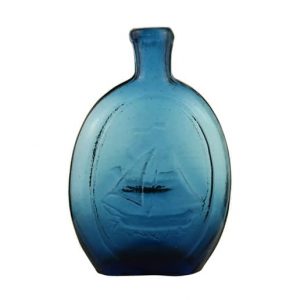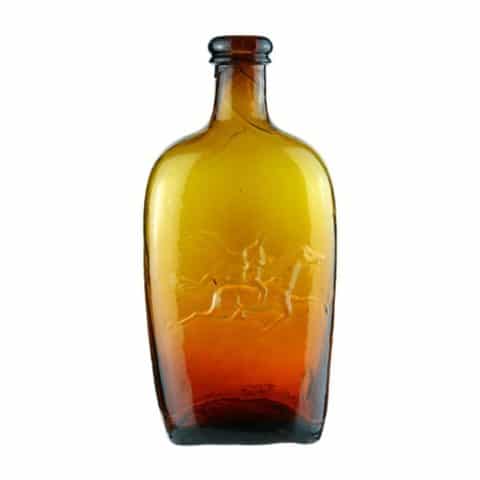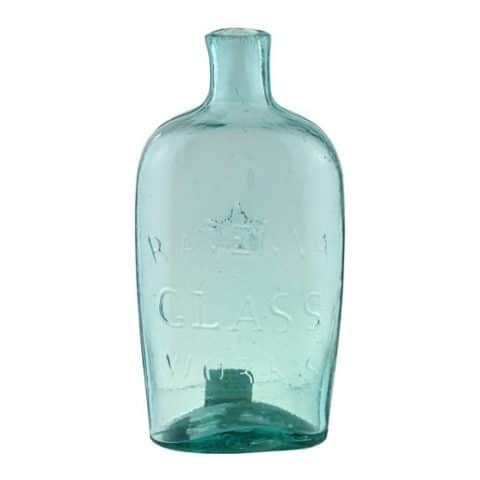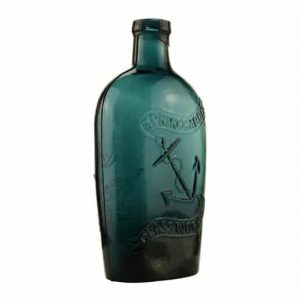GIII-1 • Cornucopia – Pinwheel Urn
GIII – 1
Cornucopia – Pinwheel
Pictorial Flask
Attributed to a Midwest or Pittsburgh District Glasshouse
Blue Aquamarine Half Pint
Provenance: Michael George Collection

Our outstanding pictorial flask is a favorite with collectors as it depicts a prominently embossed inverted cornucopia on one side and a large geometric star-shaped design affectionately called a “pinwheel” on the other. The brilliant blue aquamarine half-pint flask is considered very rare and is attributed to a Midwest glasshouse. This flask is McKearin designated as GIII-1 in Group III – Cornucopia Flasks and was once in the Warren “Bud” Lane collection.
On what is considered the obverse side of the flask, the cornucopia design occurs on a banded oval panel open at the bottom. The top and sides of the oval have beading similar to the beading on the flask sides. There is a pronounced inverted cornucopia, coiled to the left with a star or pinwheel tail. The contents of the apparently full cornucopia are spilling out to the bottom of the flask.
See the museum example GII-58 Eagle – Cornucopia Flask attributed to Pitkin Glass Works.
See the museum example GII-74 Eagle – Cornucopia Flask attributed to Keene Marlboro Street Glass Glass Works.
See the museum example of a GII-75 Pantaloon Eagle – Cornucopia Flask.

The cornucopia brimming with flowers or produce or both is an ancient motif used throughout time to symbolize prosperity and plenty. On historical flasks, the overflowing cornucopia was a purely decorative element but also reminded one of our young country’s good prospects, especially in the first half of the 19th century. The inverted cornucopia is symbolic of the contents running down the owner’s gullet.
The reverse side of the flask has a large circular beaded medallion containing a large geometric star-shaped or pinwheel design with six ribbed points connecting to an inner center circle containing a small 8-petaled rosette. Beneath the medallion is a modified symmetrical palm motif rising from a pointed oval with hatching.

The flask edges have horizontal beading. There is a plain lip and a pontil mark. Aquamarine is the prevalent glass color though McKearin lists deep shaded amber, pale olive-yellow, clear yellow-green, light green, and red amber.

Primary Image: Aquamarine GIII-1 half-pint Cornucopia – Pinwheel Pictorial Flask imaged by the FOHBC Virtual Museum midwest studio by Alan DeMaison.
Support Image: Auction Lot 58: Cornucopia – Pinwheel Figured Flask, probably Midwest America, 1820-1840. Deep blood red, sheared mouth – pontil scar, half-pint. GIII-1. Very rare mold, unique in this color. Fine condition. Strong mold impression. Must be considered one of the top American figured flasks. – Norman Heckler Jr. & Sr., Norman C. Heckler & Company, Auction #106
Support Image: Auction Lot 124: Cornucopia – Pinwheel Figured Flask, probably Midwest America, 1820-1840. Brilliant bluish aquamarine, sheared mouth – pontil scar, half pint; (light exterior high point wear). GIII-1 Great mold definition. Very rare. A beautiful little flask. – Norman Heckler Jr. & Sr., Norman C. Heckler & Company, Auction #106
Support: Reference to American Bottles and Flasks and Their Ancestry by Helen McKearin and Kenneth M. Wilson, Crown Publishers Inc., New York, 1978.
Join the FOHBC: The Virtual Museum is a project of the Federation of Historical Bottle Collectors (FOHBC). To become a member.


